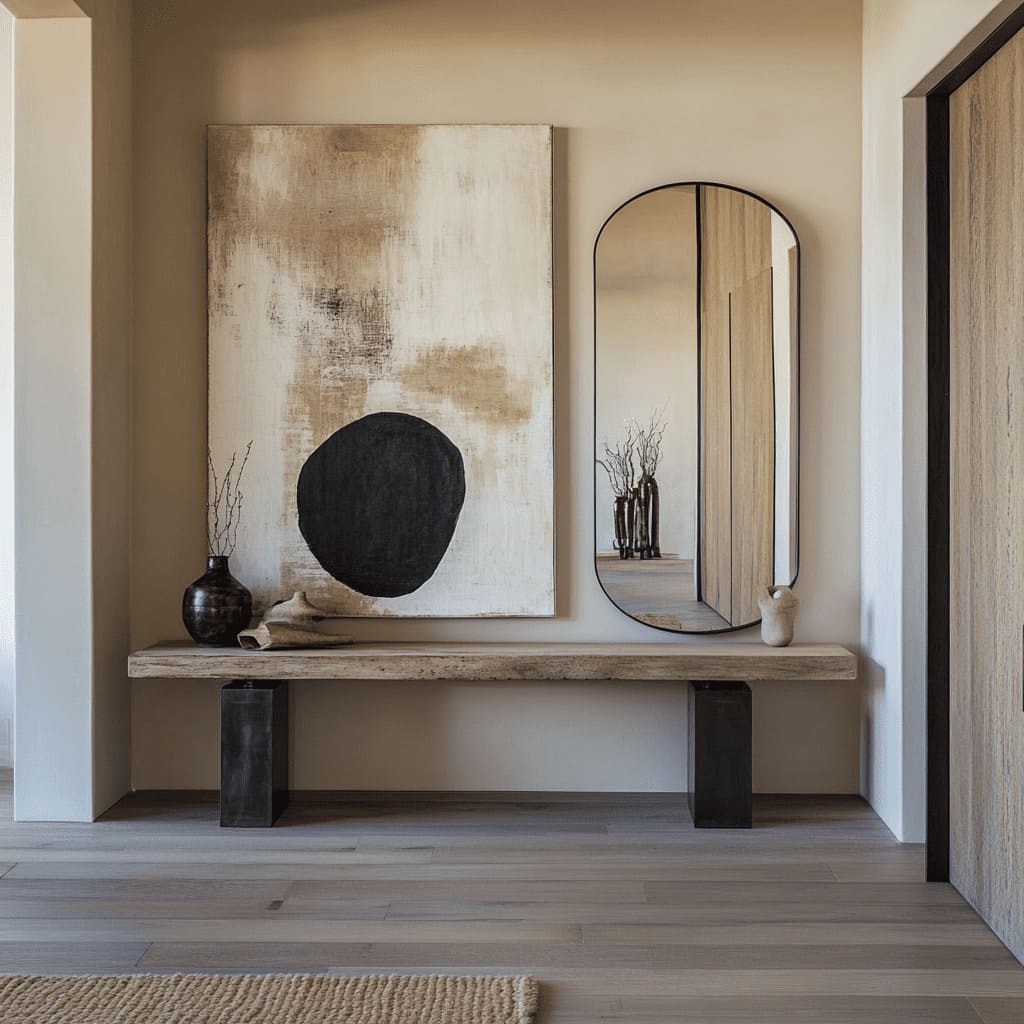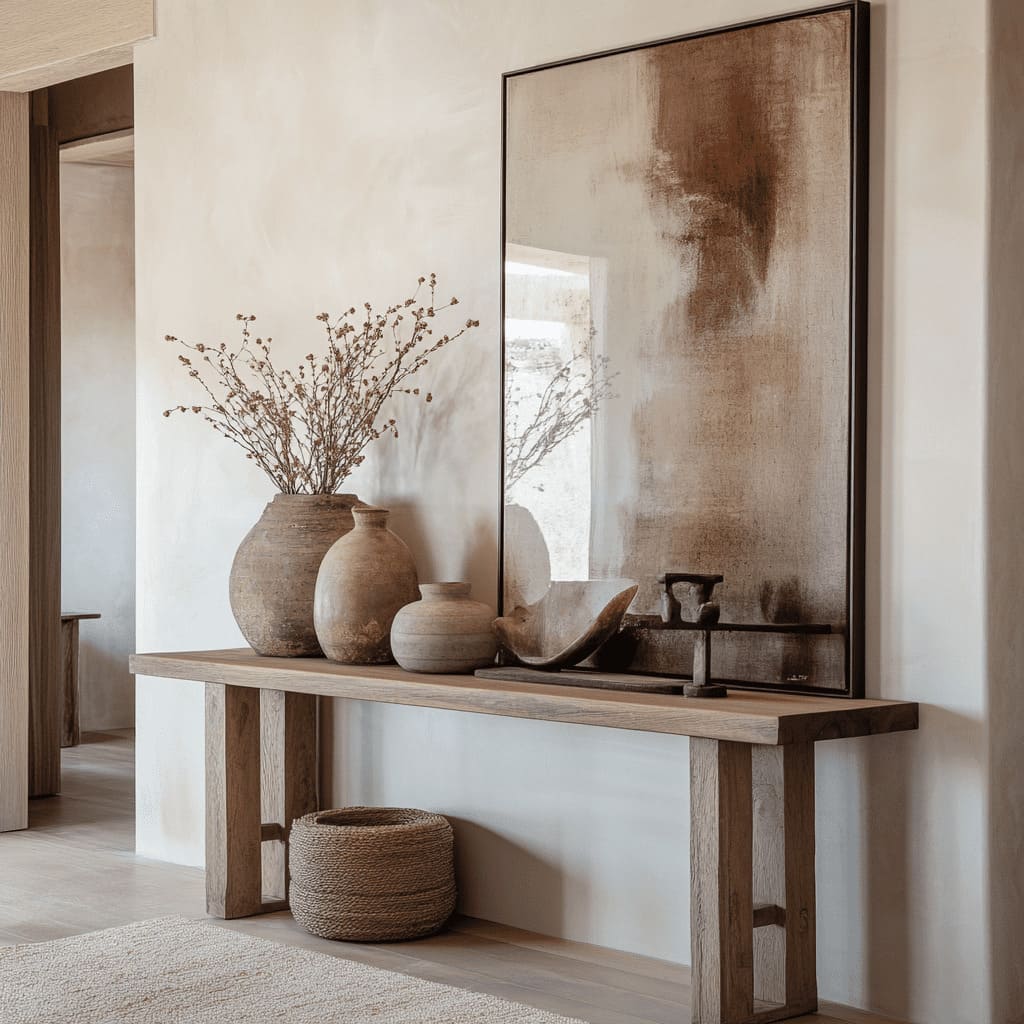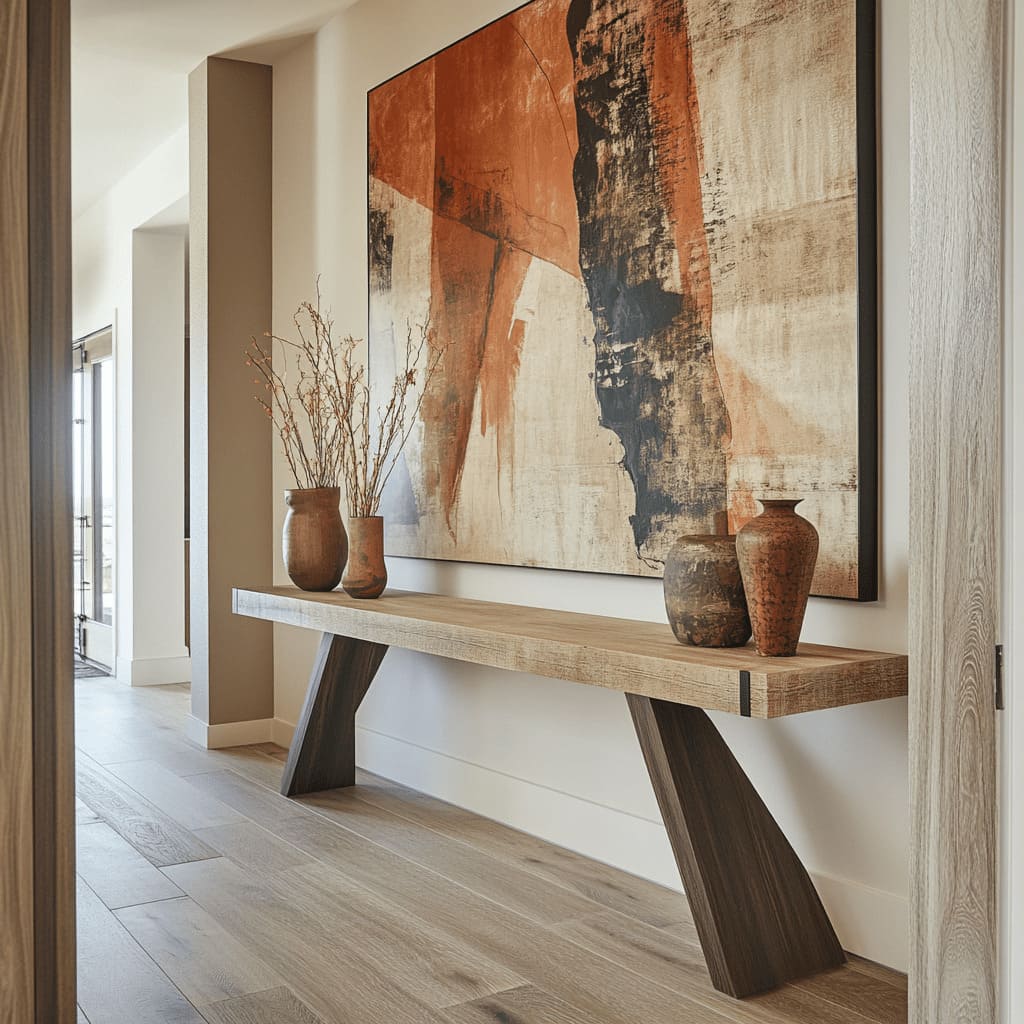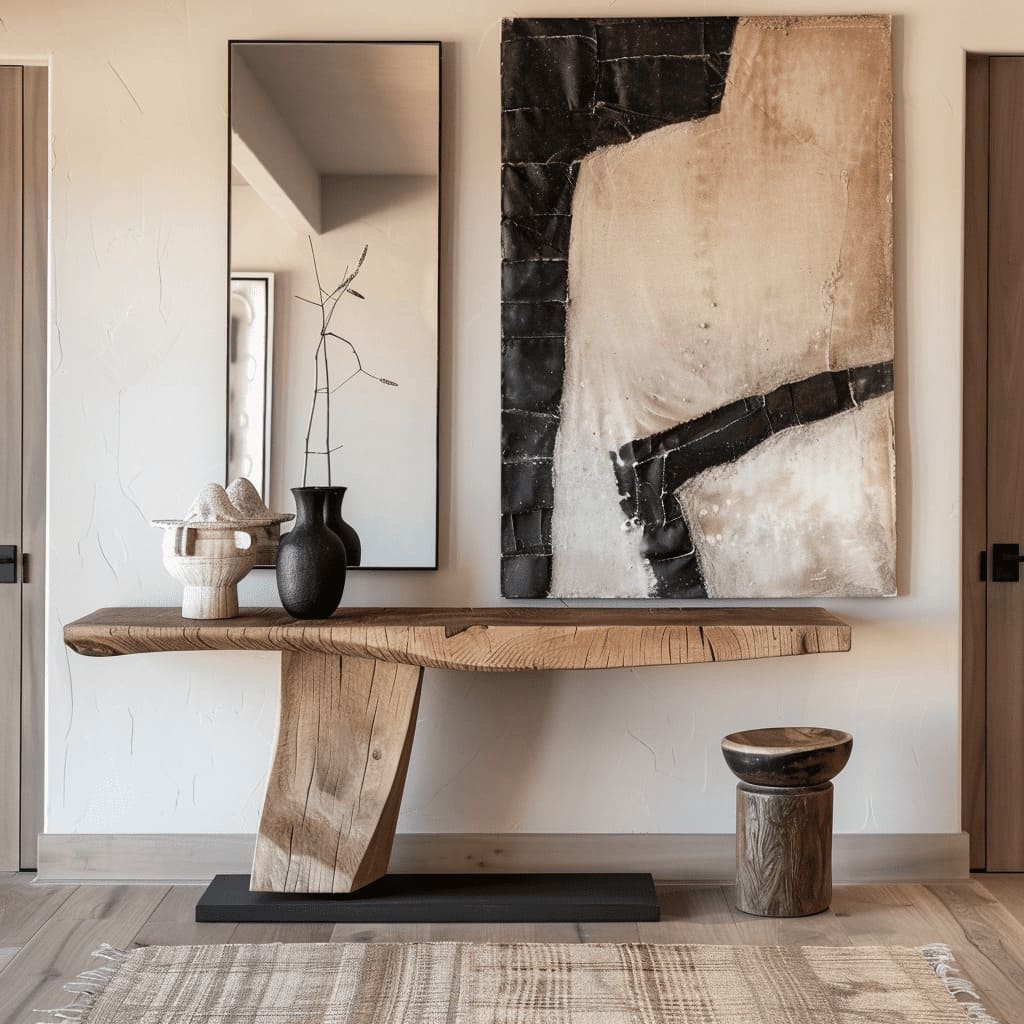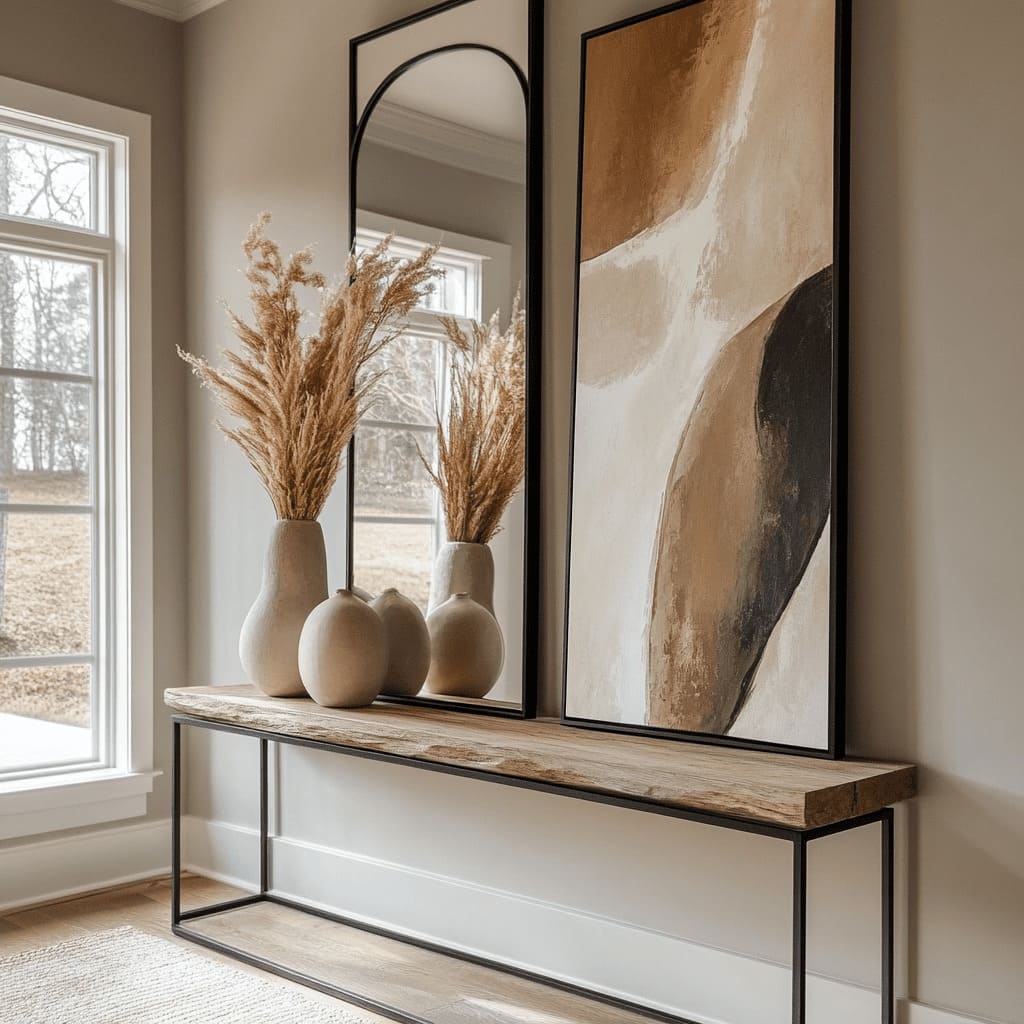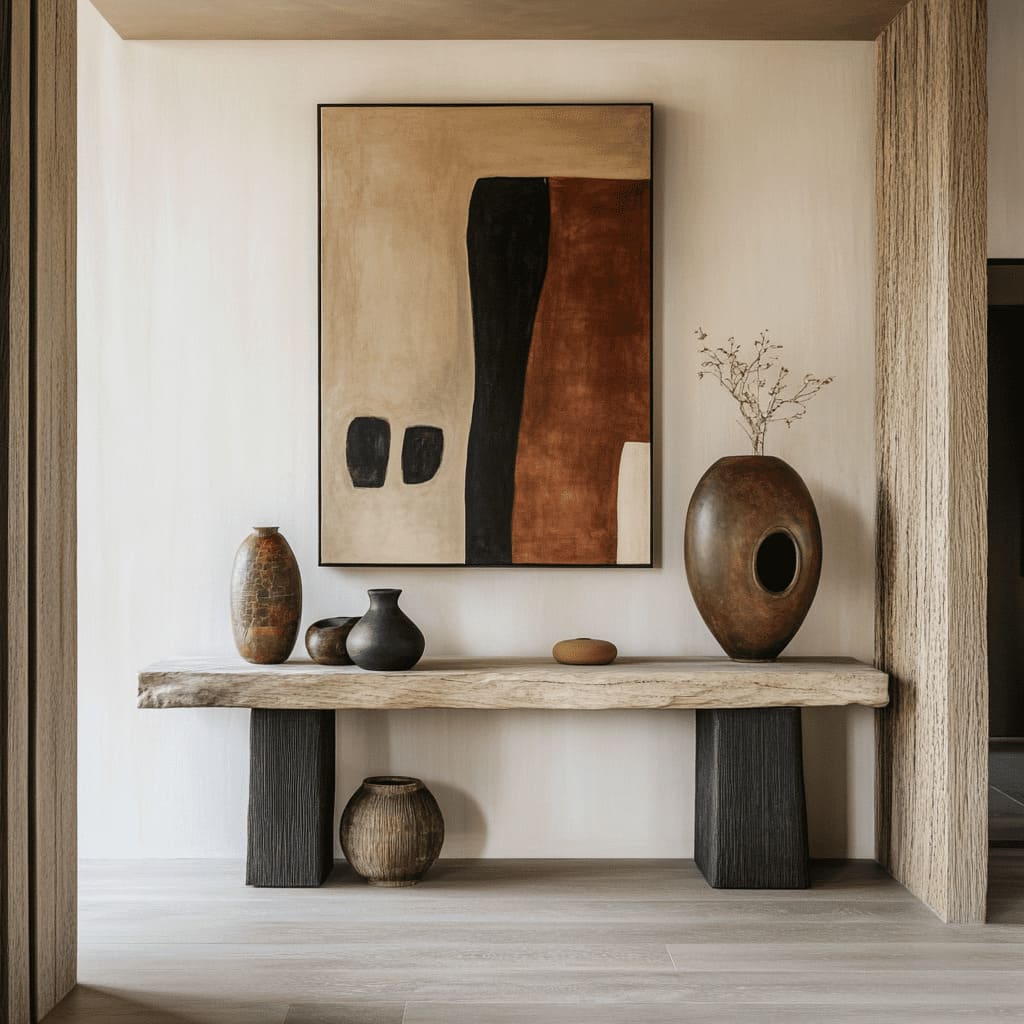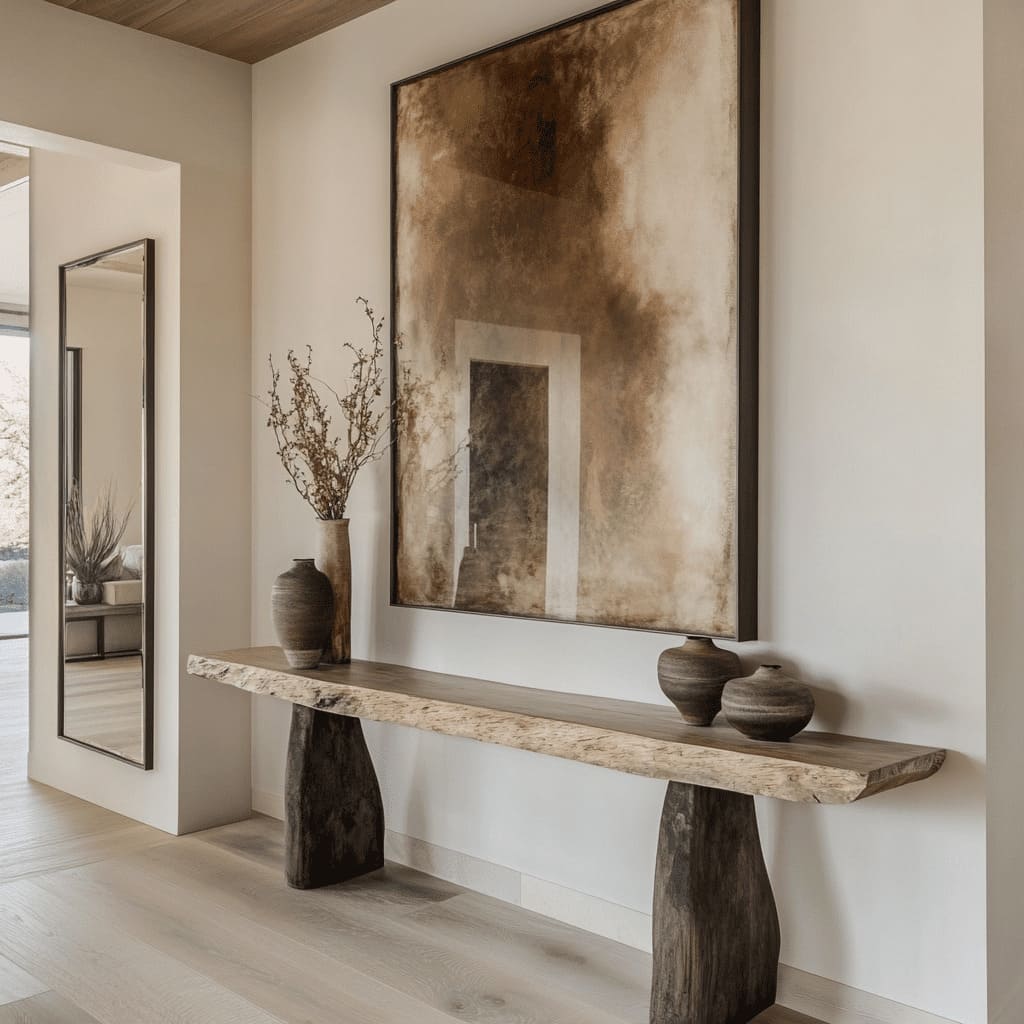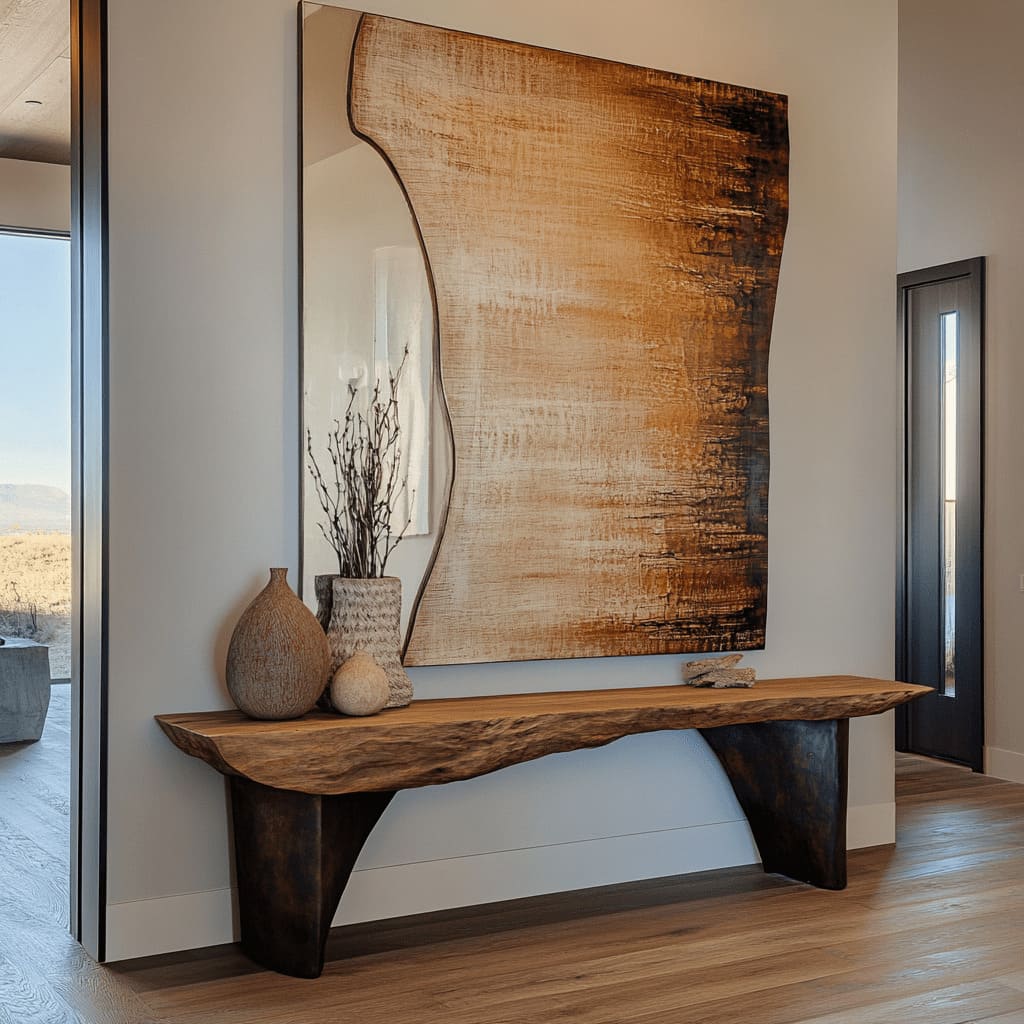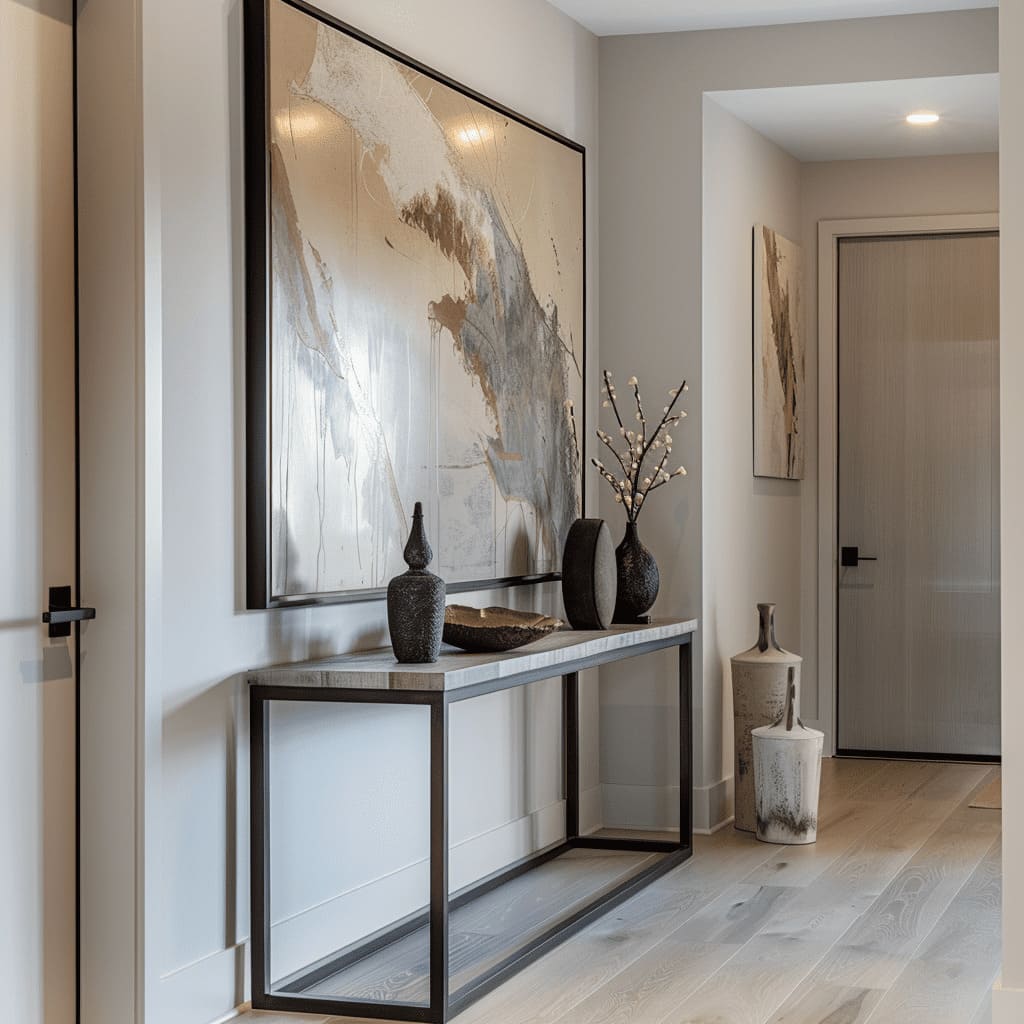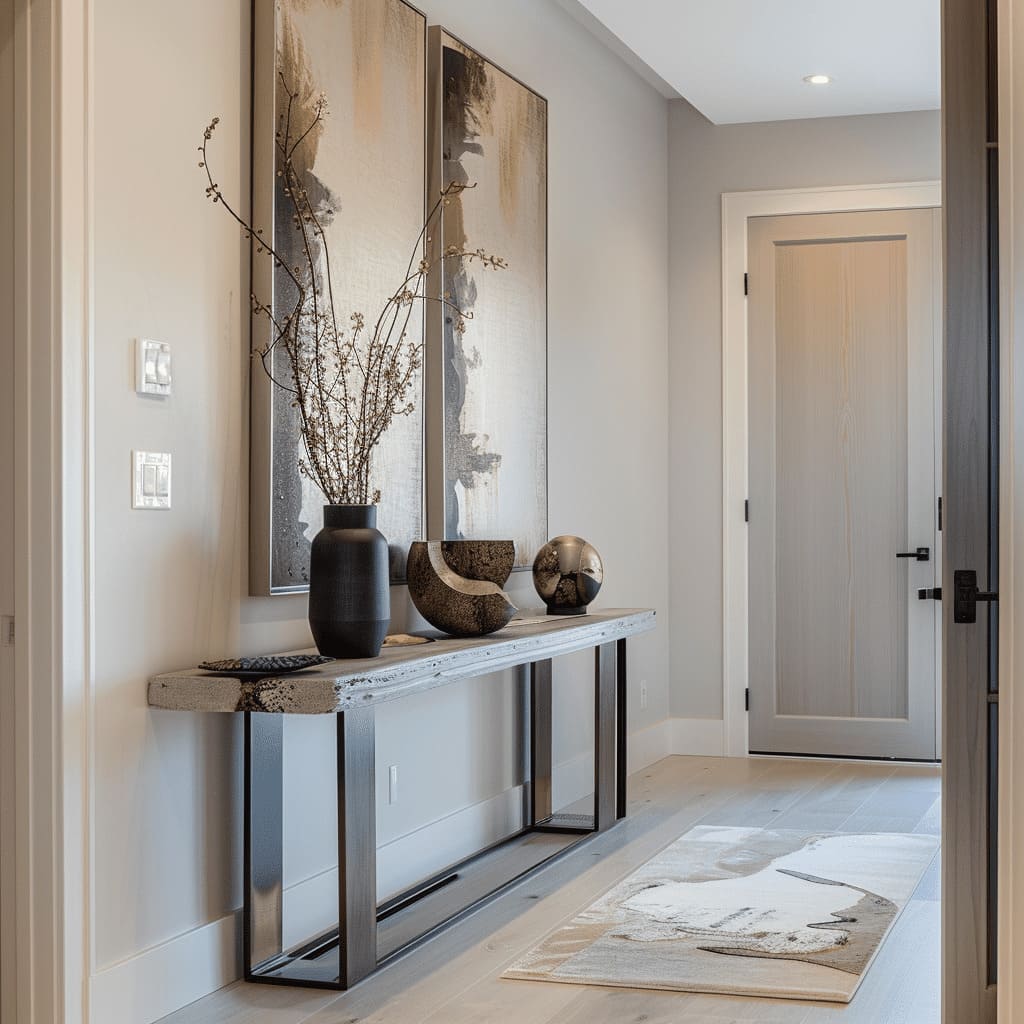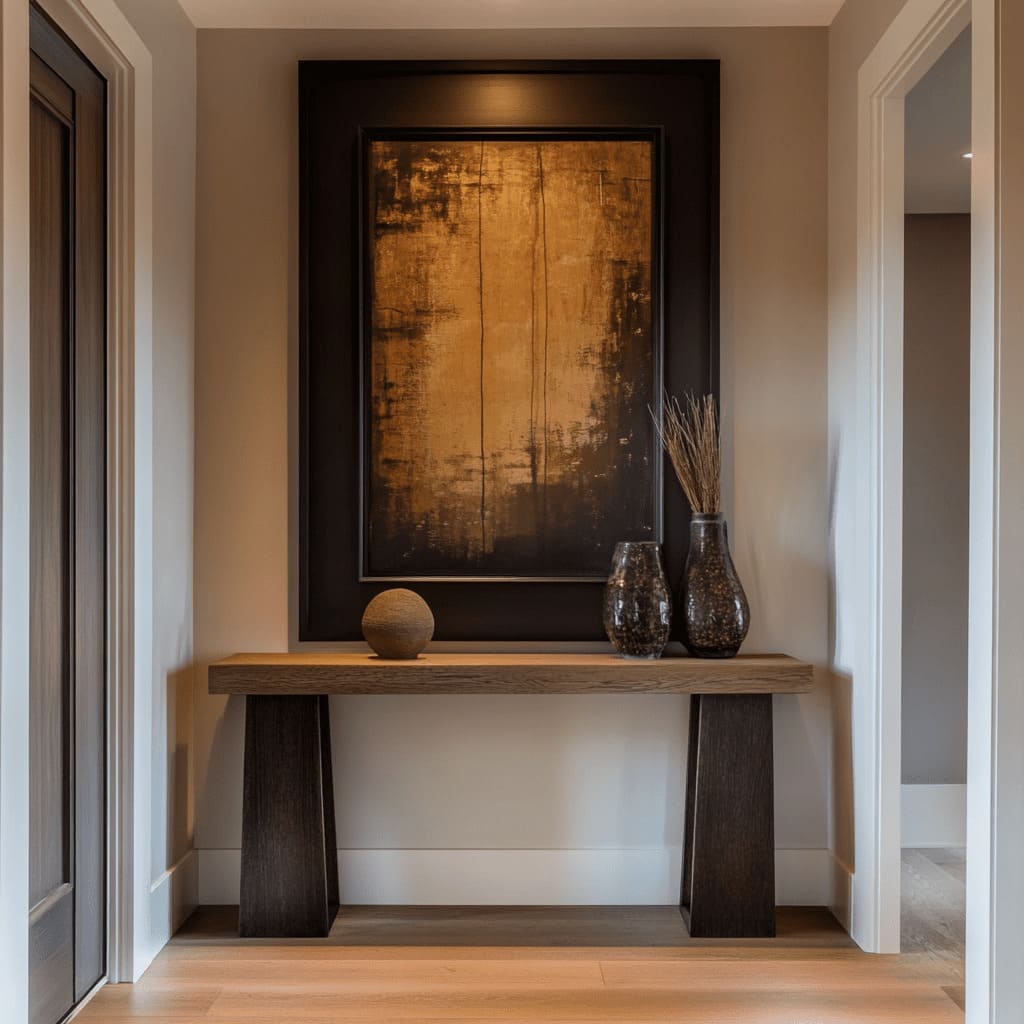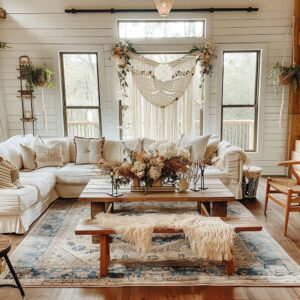A well-designed hallway can do more than connect rooms; it sets the stage for the rest of your home, creating a welcoming transition that reflects your style. When it comes to farmhouse design, the hallway is an opportunity to showcase rustic charm combined with modern touches.
This style merges the warmth and texture of natural materials with clean lines and a minimalist approach, resulting in a space that feels both cozy and sophisticated. In this article, we explore a variety of farmhouse hallway ideas that will inspire you to rethink your own entryways and corridors, blending function with beauty in a way that truly captures the spirit of farmhouse living
Key Elements of Farmhouse Hallway Design
A successful farmhouse hallway design starts with a few fundamental principles that form the backbone of this beloved style. The use of natural materials is at the forefront, with wood, stone, and metal playing key roles.
Reclaimed wood, in particular, is a hallmark of farmhouse interiors. It brings warmth and a sense of history, with its weathered textures and unique grains making each piece one-of-a-kind.
Whether it’s a sturdy console table made from old barn wood or a bench crafted from salvaged beams, these elements tell a story, adding depth and character to the space. Stone, too, finds its place, often in the form of rough-cut slabs for flooring or as a feature wall that adds a rugged, earthy feel.
The color palette in a farmhouse hallway is typically restrained, favoring earthy neutrals that provide a calming backdrop. Think shades of beige, cream, soft browns, and muted whites.
These colors work together to create an inviting atmosphere, one that feels both timeless and comfortable. They allow the textures of the natural materials to shine through, rather than competing for attention.
Additionally, a well-chosen color scheme provides a versatile base, making it easy to change up accessories and decor as the seasons change or as your tastes evolve
Texture plays a significant role in creating visual interest within a farmhouse hallway. Textured wall treatments, such as shiplap, distressed paint, or plaster effects, can add depth without overwhelming the space.
Shiplap walls, a classic farmhouse feature, introduce subtle lines that draw the eye along the length of the hallway, enhancing its sense of space. Meanwhile, a distressed or layered paint finish adds a hint of vintage appeal, suggesting that the hallway has been well-loved over the years.
These textures are key to achieving the farmhouse aesthetic, adding layers of interest that invite closer inspection. Blending modern and rustic elements is another defining characteristic of farmhouse style.
This approach allows for the juxtaposition of sleek, contemporary pieces against more traditional, rustic furniture. For example, a simple, industrial metal light fixture might hang above a rough-hewn wooden console table.
This mix of styles keeps the space feeling fresh and current, while still honoring the farmhouse roots. The goal is to achieve a balance that feels curated and personal, rather than looking like a set piece from a museum or a period drama
Farmhouse Hallway Furniture Ideas
When it comes to furnishing a farmhouse hallway, the choices are both practical and decorative. One of the most versatile pieces is the console table, which provides both a surface for display and a spot for storage.
A live-edge wooden table, with its natural contours and visible grain, serves as a focal point and conversation starter. These tables often feature metal legs, adding a modern touch that contrasts beautifully with the rustic top.
Another option is a reclaimed wood table, which can bring a sense of history and character to the space. The beauty of these pieces lies in their imperfections—the nicks, knots, and varied coloration all contribute to their unique charm
Benches and seating are also popular choices for farmhouse hallways, particularly when space allows for it. A bench can be a practical addition, providing a place to sit while putting on shoes or a spot to rest a bag.
Benches with built-in storage are especially useful, helping to keep the hallway tidy by providing a hidden spot for shoes, scarves, or other items. Upholstered seating, perhaps in a durable linen or canvas fabric, adds a touch of softness and comfort to the hallway.
Wooden stools, often tucked neatly under a console table, provide an alternative seating option that’s both stylish and functional
Decorative Accents and Accessories
The right accessories can elevate a farmhouse hallway from functional to fabulous. Vases and floral arrangements are a simple way to bring a bit of the outdoors in, adding a natural, organic element to the space.
Ceramic vases in earthy tones, like deep browns, muted greens, or soft blacks, are ideal for farmhouse decor. These vases often have a hand-thrown look, with slightly irregular shapes and finishes that add to their appeal.
Inside, a simple arrangement of bare branches or dried flowers keeps the look minimal and grounded, avoiding the overly floral or fussy styles that don’t fit with the farmhouse aesthetic
Artwork and wall decor also play an important role in defining the look of a farmhouse hallway. Abstract paintings with neutral or monochromatic palettes can add a modern touch, while still fitting within the rustic framework.
The key is to choose pieces that add texture and interest without overwhelming the space. Textural artwork, like canvas with layered paint or mixed media pieces, can add a sense of depth and intrigue.
These pieces should feel at home within the space, enhancing the overall aesthetic rather than competing with it. Mirrors are a practical and stylish addition to any hallway.
They not only help to reflect light, making the space feel larger and more open, but they can also be a beautiful decorative element in their own right. For a farmhouse hallway, opt for a mirror with a simple, understated frame—think wood, metal, or even a distressed finish that adds a hint of age and character.
Round mirrors, in particular, work well in farmhouse settings, providing a soft contrast to the more linear lines of shiplap walls or wooden floorboards
Flooring and Rugs
The choice of flooring in a farmhouse hallway can have a significant impact on the overall look and feel of the space. Wide plank wood floors are a popular choice, often in a light to medium-dark stain that adds warmth without darkening the space too much.
The natural grain and texture of the wood add to the rustic charm, providing a visually interesting base that complements the other natural materials in the room. A matte finish on the wood prevents glare and enhances the organic feel, making the floor look more lived-in and authentic
To add comfort and texture underfoot, consider adding a rug to the hallway. Natural fiber rugs, such as jute or sisal, are a great choice for farmhouse interiors.
These rugs have a warm, neutral color palette that blends seamlessly with the rest of the decor, while their rough texture adds a bit of contrast to the smoother wood floors. Layering rugs can also be an effective way to add depth and interest, particularly in a long hallway where a single rug might feel too monotonous.
A runner in a complementary color or pattern can add a touch of softness and warmth, while also protecting the floor from wear and tear
Lighting and Ambiance
Lighting is a crucial element in creating the right atmosphere in a farmhouse hallway. Natural lighting is ideal, so whenever possible, maximize the amount of daylight entering the space.
Mirrors are particularly useful in this regard, as they reflect light around the room, brightening darker corners and creating a more open, airy feel. If the hallway lacks sufficient natural light, consider adding a glass door or a strategically placed window to help draw in more daylight
For ambient lighting, think about adding wall sconces or pendant lights that complement the farmhouse style. These fixtures often feature rustic materials like wrought iron, brass, or wood, and have simple, clean lines that avoid the overly ornate or elaborate.
The goal is to provide soft, warm illumination that creates a welcoming glow, rather than harsh overhead lights that can feel cold or clinical. Consider using dimmable bulbs to adjust the light levels throughout the day, helping to create a cozy atmosphere in the evening or a bright, cheerful feel during the day.
Creating a cozy atmosphere in a farmhouse hallway involves more than just good lighting—it’s about the combination of natural light, soft colors, and thoughtful decor elements. By layering different textures and materials, and choosing pieces that complement each other, you can create a space that feels both comfortable and stylish, inviting guests to linger rather than simply pass through.
Creating Balance and Harmony in a Farmhouse Hallway
Achieving balance and harmony in a farmhouse hallway requires a careful mix of symmetrical and asymmetrical arrangements. While symmetry can create a sense of order and calm, too much of it can feel rigid or predictable.
Instead, try balancing symmetrical elements, like a pair of matching wall sconces or a pair of identical vases, with asymmetrical arrangements, such as a cluster of smaller decorative items on one side of the console table. This approach keeps the eye moving and adds visual interest, making the space feel more dynamic and less formal
Layering textures and materials is another key to creating depth and interest in a farmhouse hallway. Combining different textures—smooth ceramic vases, rough wooden tables, soft wool rugs, and hard metal fixtures—creates a rich, tactile experience that draws the viewer in.
The goal is to create a space that feels lived-in and layered, with each piece contributing to the overall aesthetic without overwhelming the others. Integrating modern touches into a farmhouse hallway can keep the space from feeling too rustic or old-fashioned.
This might include sleek, minimalist decor, contemporary artwork, or modern materials like glass or steel. The key is to blend these elements with more traditional pieces in a way that feels cohesive, rather than jarring.
For example, a modern metal light fixture can add a bit of edge to a space dominated by natural wood, while still feeling appropriate within the farmhouse aesthetic
Tips for Personalizing Your Farmhouse Hallway
One of the best ways to make a farmhouse hallway feel unique is by incorporating personal artifacts and decor. This could be anything from family heirlooms to vintage finds, or even custom artwork that reflects your own tastes and experiences.
These personal touches add a layer of meaning and history to the space, making it feel more like a reflection of you and your family. Consider displaying items that tell a story—whether it’s a collection of old photographs, a piece of artwork passed down through generations, or a vintage piece of furniture with a story behind it
Functional additions are also important in a farmhouse hallway, where space is often limited, and functionality is key. Consider adding practical elements like coat racks, hooks, or storage solutions that blend with the farmhouse style.
These items not only provide useful storage but can also add to the overall decor. A rustic wooden coat rack, for example, can be both a practical and attractive addition, while a series of wall hooks can provide a place to hang bags or scarves
Finally, don’t forget about seasonal decor, which can keep your hallway feeling fresh and inviting throughout the year. In the fall, consider adding a wreath made from dried leaves or wheat, or a selection of gourds or pumpkins on the console table.
In the winter, switch these out for evergreen branches, pinecones, or a cozy throw. These small changes can make a big difference in how the space feels and can help to keep your farmhouse hallway looking fresh and current
Conclusion
A farmhouse hallway is more than just a passage from one room to another; it’s an opportunity to create a warm, inviting space that reflects your personal style and sets the tone for the rest of your home. By focusing on natural materials, a neutral color palette, and a thoughtful blend of modern and rustic elements, you can create a hallway that is both functional and beautiful.
With the right combination of furniture, decor, and lighting, your farmhouse hallway can become a space that truly wows your guests and makes you smile every time you walk through it


